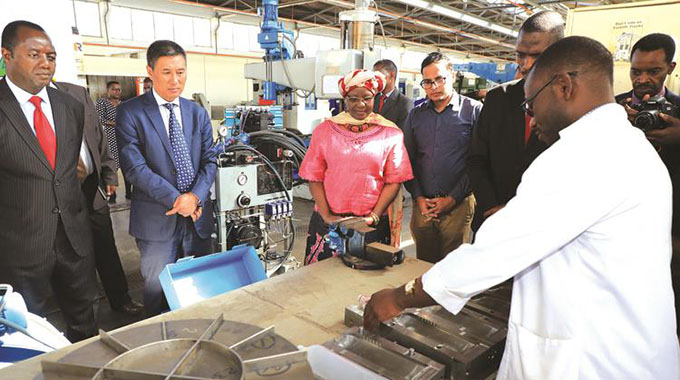Benefits of containerisation in African agriculture

Charles Dhewa Correspondent
Post-harvest handling and storage of agriculture produce remain the biggest challenges for the majority of African smallholder farmers.
Unfortunately, most solutions being pushed are designed to get surplus commodities moving quickly from farming areas to the market.
Solutions that enable farmers to hold onto their produce and sell profitably rather than be pushed to sell by the condition of the commodity are largely missing.
This is where containerisation becomes a solution.
There is a limit to the quantity of produce a farmer can store at home, and that determines production levels as each farmer ends up producing in line with storage capacity.
Even where conditions are suitable for doubling productivity, farmers hesitate to increase production because storage capacity cannot be equally doubled.
On the other hand, most smallholder farmers keep their food and harvests in their kitchens, living-rooms and bedrooms.
The condition of such harvests can only be good for household consumption, not the market. Crops stored in houses and small granaries are obviously too little even for the local market.
Commodities that can benefit from containerisation
Setting up containers at village level will help in aggregating commodities and provide a sense of the collective volume of yields from one area.
Crops that can be stored in containers include the following:
Onions — Apart from drying, storage is one of the main challenges around onions. That is why supply is so erratic in many Southern African countries, including Zimbabwe. Poor storage leads to rotting, loss of quality and reduced shelf life.
Butternuts — During gluts, butternuts can sell for 22c/kg and in periods of scarcity they go for 72c/kg. This variation is not good for the consumer and the market, although it may be good for a few farmers who may have butternuts during scarcity periods. Containerisation and warehousing can solve a lot of these supply and demand mismatches.
High value commodities (red, yellow and green peppers) — Some of these may not be produced in winter, and during off-season their price can go as high as US$2/kg. Containerisation and storage will ensure an even flow of these commodities into the market, avoiding wild price variability.
Carrots — These can also be stored for consistent supply.
Fruits (apples, oranges and peaches) — These tend to run out completely and can be stored when in season for release when out of season.
Dry crops (groundnuts, sugar beans and others) — These can also be stored for release as and when the market wants them, especially when better prices start prevailing. Prices of sugar beans tend to go up towards the rainy season as most people purchase them for seed.
Sweet potatoes — Given that most smallholder farmers store this crop in the field, storage facilities can quickly release land for other uses or for preparation processes like liming so that the next crop is planted on time.
Traditional grains — These can also be stored for both human and livestock consumption. An increase in the production of indigenous chickens is driving the demand, hence production, of traditional grains.
Enabling market readiness
A critical look at storage will give African agriculture a different picture. It should not be just about addressing insects and rushing commodities to the market.
In most cases, crops are produced when the market is not ready. Therefore, containerisation is a critical stage in enabling market readiness. The majority of farmers do not have storage facilities or sheds, and do not have money to invest in such important infrastructure.
Volumes of commodities produced by smallholder farmers make it less cost effective to invest in storage or take the few commodities to the market individually.
Unfortunately, most investments in post-harvest technologies by governments and development partners have focused on grain storage like metal silos, ignoring other foods such as horticulture that are a critical part of the food basket. Investment in infrastructure will help producers, consumers and many other value chain actors.
Feedback: [email protected]/[email protected]








Comments